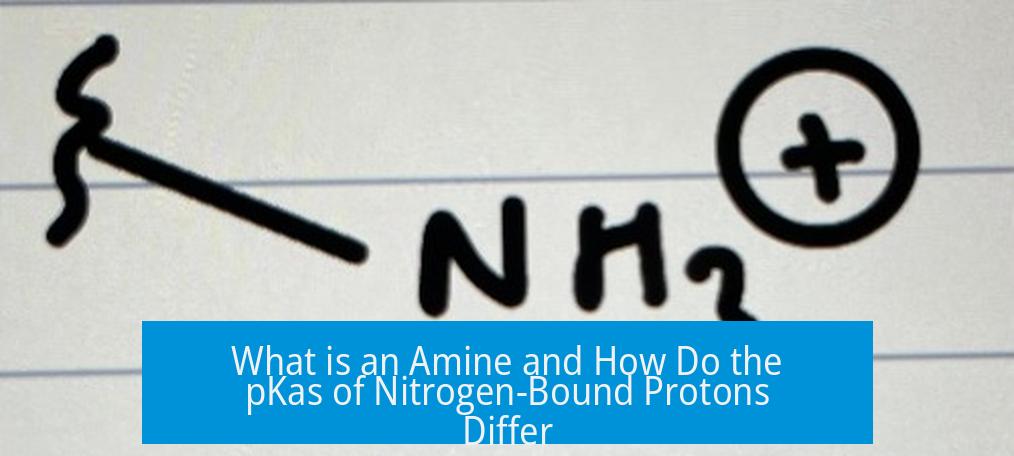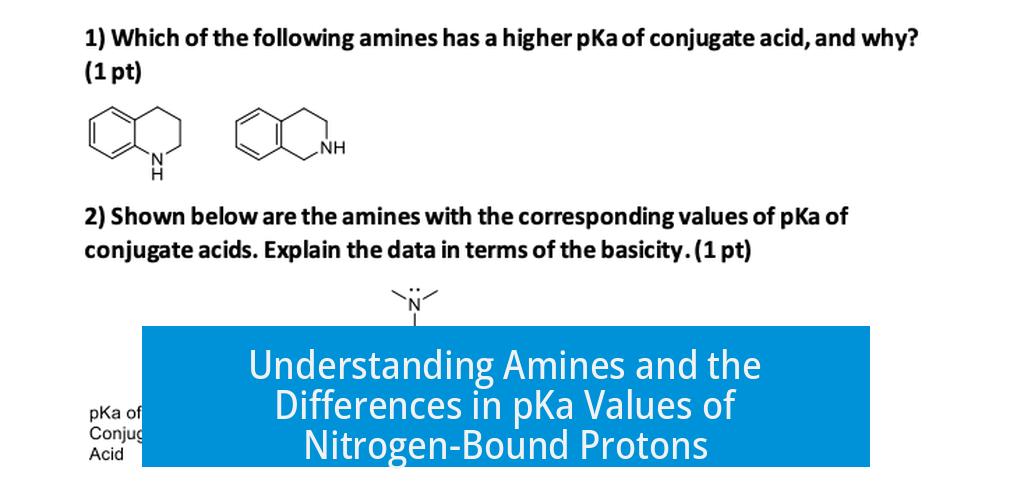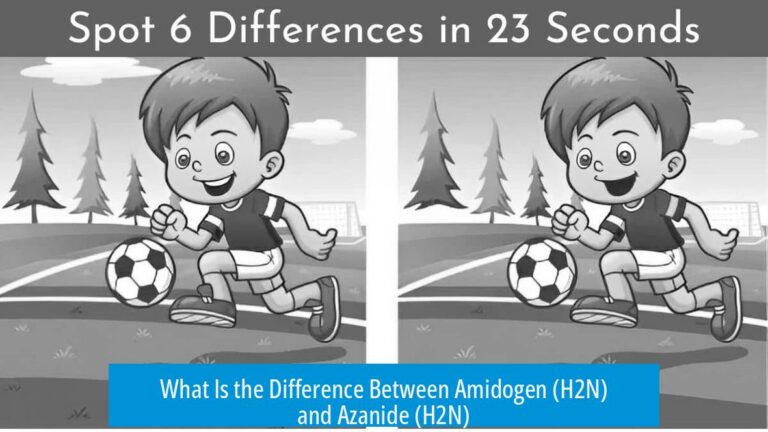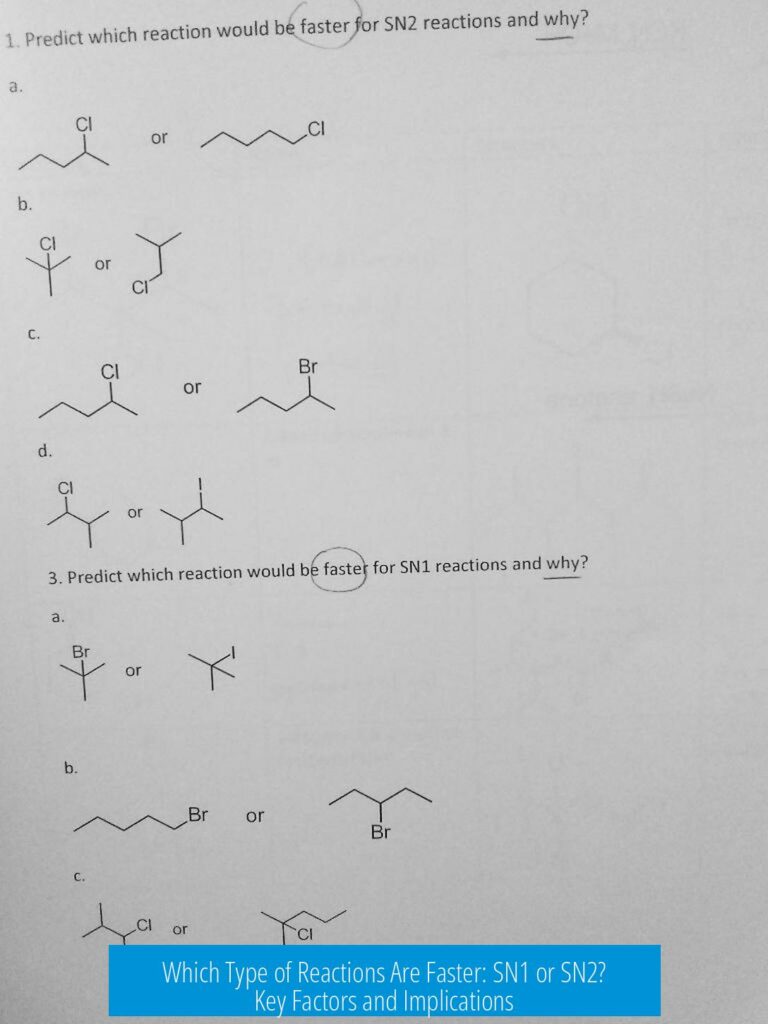What is an Amine and How Do the pKas of Nitrogen-Bound Protons Differ?

An amine is an organic compound featuring a nitrogen atom bonded to one or more alkyl or aryl groups. Its pKa values vary widely based on protonation states, reflecting differences in stability and acidity of nitrogen-bound protons.
Understanding Amines: Structure and Forms
Amines have the general formula R-NH2, where R represents an organic substituent. The nitrogen atom is central to amine chemistry and can exist in several protonation states:
- Neutral amine (RNH2): Nitrogen bonded to one organic group and two hydrogens.
- Protonated amine (RNH3+): Nitrogen holds an extra proton, carrying a positive charge.
- Deprotonated amine (RNH-): Nitrogen possesses a negative charge, formed by the removal of a proton.
pKa Values of Nitrogen-Bound Protons
| Species | Approximate pKa | Stability Notes |
|---|---|---|
| RNH3+ (Protonated amine) | ~9-10 | Acidic; affected by electron donating/withdrawing groups |
| RNH2 (Neutral amine) | ~37 | Extremely weak acid; conjugate base unstable |
| RNH- (Deprotonated amine) | No meaningful pKa | Highly unstable; strong base |
Why Do These pKa Values Differ?
The protonated amine (RNH3+) typically has a pKa around 9 to 10. This reflects its ability to lose a proton easily, transforming into the neutral amine. Electron-donating groups increase electron density on nitrogen, stabilizing the positive charge and slightly raising the pKa. In contrast, electron-withdrawing groups lower the pKa by destabilizing RNH3+.
The neutral amine (RNH2) has a very high pKa near 37. This high number indicates that it acts as a very weak acid—losing a proton is unfavorable. It forms a conjugate base (RNH-), where nitrogen bears a negative charge. This conjugate base is highly unstable due to nitrogen’s electronegativity and its limited capacity to hold extra electrons. Thus, RNH- is a strong base that quickly captures protons from other molecules rather than existing freely.
The deprotonated amine (RNH-) essentially has no practical pKa. It represents a highly reactive anion that readily seeks protons. Nitrogen’s inability to stabilize the negative charge makes RNH- uncommon under typical conditions. It readily obtains protons from solvents or other compounds when formed, such as in strong bases like LDA (lithium diisopropylamide).
Implications in Chemistry and Biochemistry
- The pKa of the protonated amine is particularly relevant in biological systems. For example, amino groups in amino acids have pKa values close to 10. This affects protein structure and enzyme activity by influencing protonation states at physiological pH.
- In synthetic chemistry, understanding the high pKa of neutral amines explains why amines generally do not act as acids but more commonly as bases.
- The instability of the deprotonated amine form accounts for its absence as a free species and its rapid proton abstraction behavior.
Practical Notes on Reporting pKa Values
Typically, when discussing amines, chemists refer to the pKa of the conjugate acid, RNH3+, rather than the neutral amine. This is because the protonated form’s acidity is chemically and biologically significant. Tables of amino acid pKa values, such as for leucine, list the amino group pKa near 9-10, reflecting these principles.
Summary of Key Points
- Amines (R-NH2) consist of an organic group bonded to nitrogen.
- Protonated amines (RNH3+) have pKa values of approximately 9-10, making them weak acids.
- Neutral amines (RNH2) have very high pKa values near 37 due to unstable conjugate bases.
- Deprotonated amines (RNH-) are highly unstable and do not possess a meaningful pKa.
- pKa values depend on substituent effects and impact chemical behavior of amines in biological and synthetic contexts.





Leave a Comment